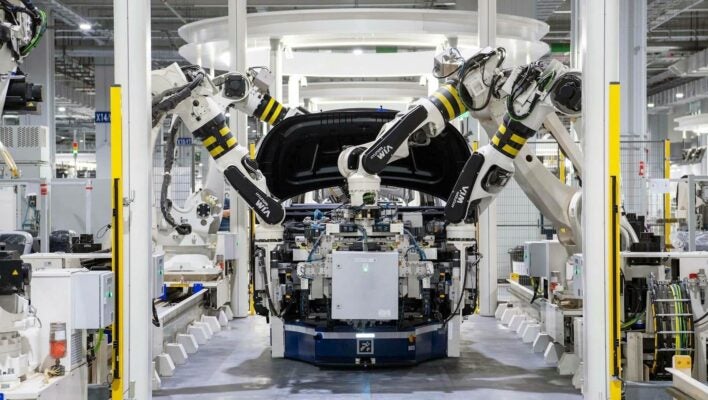Mobile robots aren’t being adapted quite as quickly as we thought, according to a new Interact Analysis report that slashes its 2025 market forecast for the technology by a full $800 million.
That leaves room for growth, to be clear: The adjusted forecast is still well over half a billion for that year. However, growth will definitely be slower than expected, with the industry analysis firm Interact Analysis citing tariff impacts as one major reason.
These findings align with Tech.co’s original research, given that our new Logistics Report found just 15% of respondents had adopted warehouse robotics in the past year, a far cry from the 51% who had adopted the most popular tech solution, route optimization software.
Mobile Robot Market Forecast Is Down $800 Million This Year
Lower growth is predicted across every major region, according to the new forecast. The trajectory of the market cap across the next five years will be impacted as well, with increasing reductions across each consecutive year up.
As a result, the new 2030 forecast has dropped down to $15.6 billion, from a number north of $20 billion.
 This just in! View
This just in! View
the top business tech deals for 2025 👨💻
The resulting compound annual growth rate (CAGR) across the next five years is down, naturally, from previous optimistic estimates of 26% to a still-pretty-good 21%.
Why? Tariffs and Slow Warehouse Construction
Interact Analysis cites a few different reasons why it has needed to adjust its initial forecast. The big one are all the tariffs that the Trump administration has levied or increased already this year.
These changes decrease capital investment decision clarity, sparking delays with ripple effects across the industry. In fact, the Global Economic Policy Uncertainty (GEPU) Index hit 430 in January 2025, marking an all-time high that surpasses even the 2008 financial crisis and the COVID pandemic.
Suddenly, large-scale automation investments look a little too risky in 2025. Plus, many robot parts come from China and subsequently cost more due to the tariffs.
Warehouse construction is another constricting factor, since it has slowed in key markets including the US and Japan.
Logistics Operations Pick Software Innovation Over Automation
The new Tech.co survey found that logistics companies are interested in adopting tech solutions to address a shortage of drivers in the industry. However, automation is at the bottom of their list of potential tech — likely due to high costs.
In the last year, 51% of logistics and transport professionals said that they had adopted route optimization software. Other top responses were also software solutions aimed at streamlining and boosting efficiency: driver monitoring and coaching platforms (46%), fleet tracking software (41%), and fuel/energy reduction technology (30%).
The two solutions at the bottom of the list? Warehouse robotics (15%) and autonomous vehicles (10%), the two big forces of automation that the industry is considering.
Still, the survey did find that 63% of U.S. freight businesses say they use some form of tech to reduce reliance on drivers. Mobile robotics are certainly among those tools — but thanks to market forces and new tariffs, they’re not at the top of the pack.




